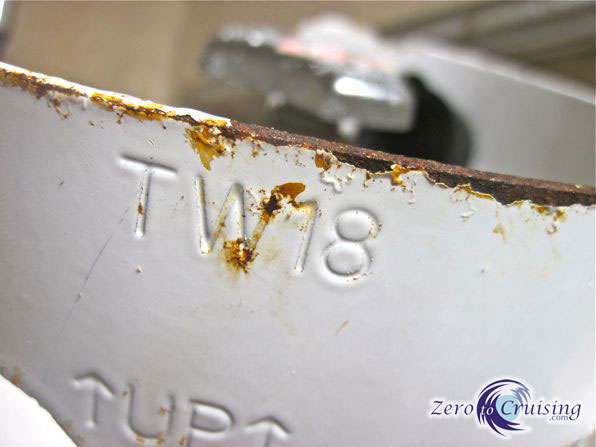(Part I of the series is here.)Okay, here we go: the pictures...
Step two thousand, four hundred and ninety seven: Sea trials. Only one thing left to do. Drop it in the water and see if it floats! Luckily, our first sea trials were not only successful from the floating aspect, but we even managed to stay dry! Up and down the canals, one person or two, we tested that Acrux does exactly what she was intended to do. Float, row, and transport us across the anchorage.
And last but not least, here she is resting on her preferred transport spot. Most of the time on the ICW we'll simply tow her behind, ready for quick deployment once we're at our anchorage for the night. But for crossing larger bodies of water, or just for extra security, this is where she'll rest.
Our friends at Glen-L are now carrying these interesting looking composite fasteners. Leave them embedded as you cold mold and save the hassle of removing and filling holes.
These fastenings are excellent for attaching layers of planking during cold molding because they don't need to be removed.
In the past, when using staples to fasten the layers in cold molding, they needed to be removed once the glue set if they were a corrosive metal. Imagine having to remove thousands of staples! Well, not any more!
Raptor® composite fastenings don't need to be removed. The heads can be sanded right off without damaging your tools and will even take a stain.
Composite fastenings won't replace bronze screws in boat building, but they will be of tremendous value for applying a final layer of mahogany for a planked look, for strip built boats and cold molded construction.
Besides being a huge time-saver:
They
- can be sanded, sawn or cut
- Won't rust or corrode
- No need to putty, can be stained, painted or left bare
- No electrolysis or galvanic corrosion
- They bond like glue-the entire shaft fuses permanently with wood















 The Tare Weight of our 20 lb. steel tank is 18 lbs.
The Tare Weight of our 20 lb. steel tank is 18 lbs. The gauge now reads full, as it should.
The gauge now reads full, as it should.






















